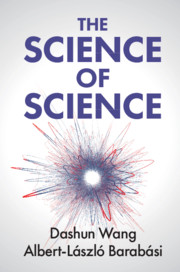Book contents
- The Science of Science
- The Science of Science
- Copyright page
- Dedication
- Contents
- Acknowledgements
- Introduction
- Part I The Science of Career
- Part II The Science of Collaboration
- 8 The Increasing Dominance of Teams in Science
- 9 The Invisible College
- 10 Coauthorship Networks
- 11 Team Assembly
- 12 Small and Large Teams
- 13 Scientific Credit
- 14 Credit Allocation
- Part III The Science of Impact
- Part IV Outlook
- Book part
- References
- Index
10 - Coauthorship Networks
from Part II - The Science of Collaboration
Published online by Cambridge University Press: 07 February 2021
- The Science of Science
- The Science of Science
- Copyright page
- Dedication
- Contents
- Acknowledgements
- Introduction
- Part I The Science of Career
- Part II The Science of Collaboration
- 8 The Increasing Dominance of Teams in Science
- 9 The Invisible College
- 10 Coauthorship Networks
- 11 Team Assembly
- 12 Small and Large Teams
- 13 Scientific Credit
- 14 Credit Allocation
- Part III The Science of Impact
- Part IV Outlook
- Book part
- References
- Index
Summary
To describe coauthorship networks, we begin with the Erdös number, which links mathematicians to their famously prolific colleague through the papers they have collaborated on. Coauthorship networks help us capture collaborative patterns and identify important features that characterize them. We can also use them to predict how many collaborators a scientist will have in the future based on her coauthorship history. We find that collaboration networks are scale-free, following a power-law distribution. As a consequence of the Matthew effect, frequent collaborators are more likely to collaborate, becoming hubs in their networks. We then explore the small-world phenomenon evidenced in coauthorship networks, which is sometimes referred to as “six degrees of separation.” To understand how a network’s small-worldliness impacts creativity and success, we look to teams of artists collaborating on Broadway musicals, finding that teams perform best when the network they inhabit is neither too big or too small. We end by discussing how connected components within networks provide evidence for the “invisible college.”
Keywords
- Type
- Chapter
- Information
- The Science of Science , pp. 102 - 109Publisher: Cambridge University PressPrint publication year: 2021



